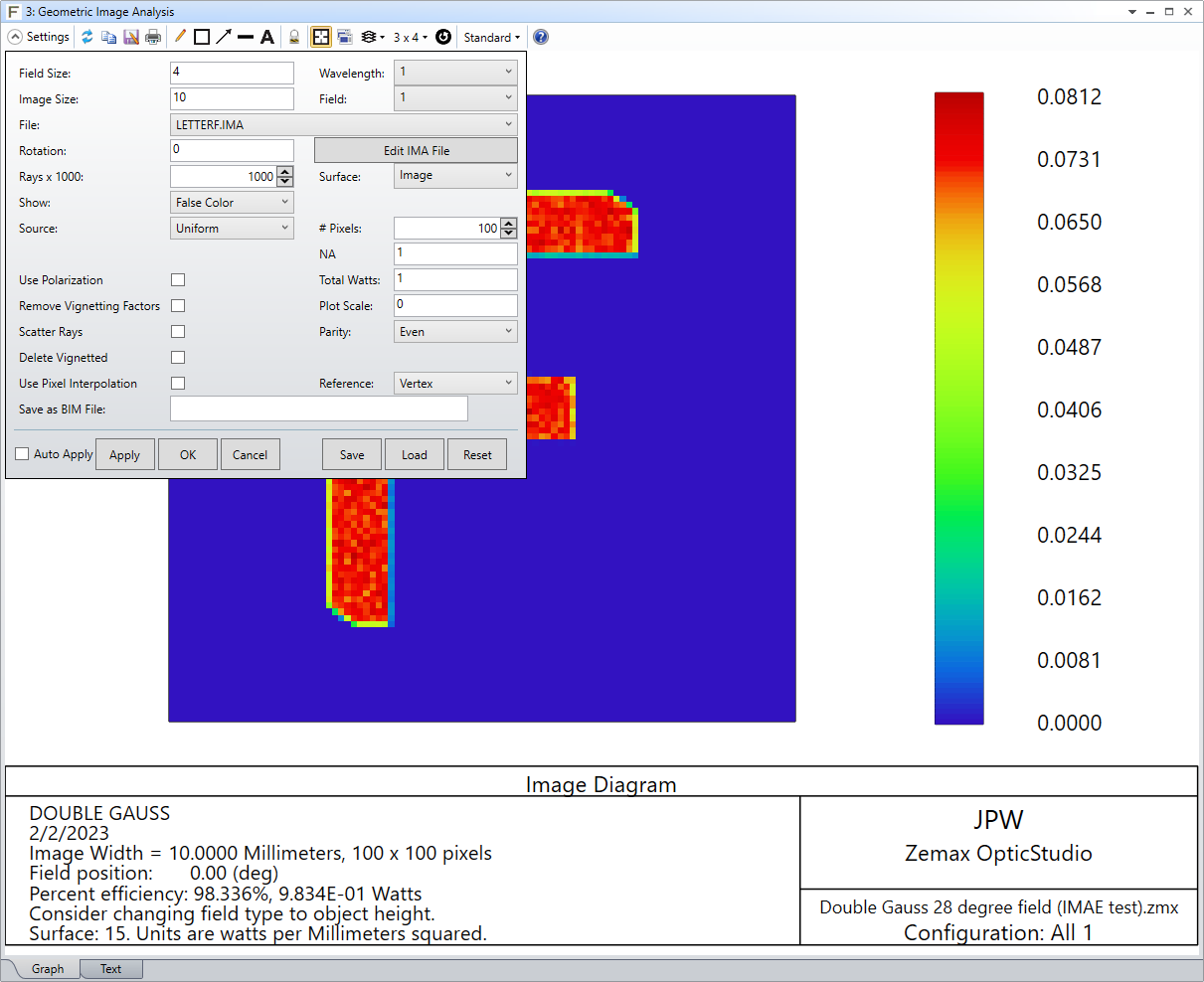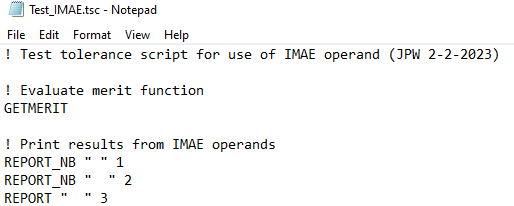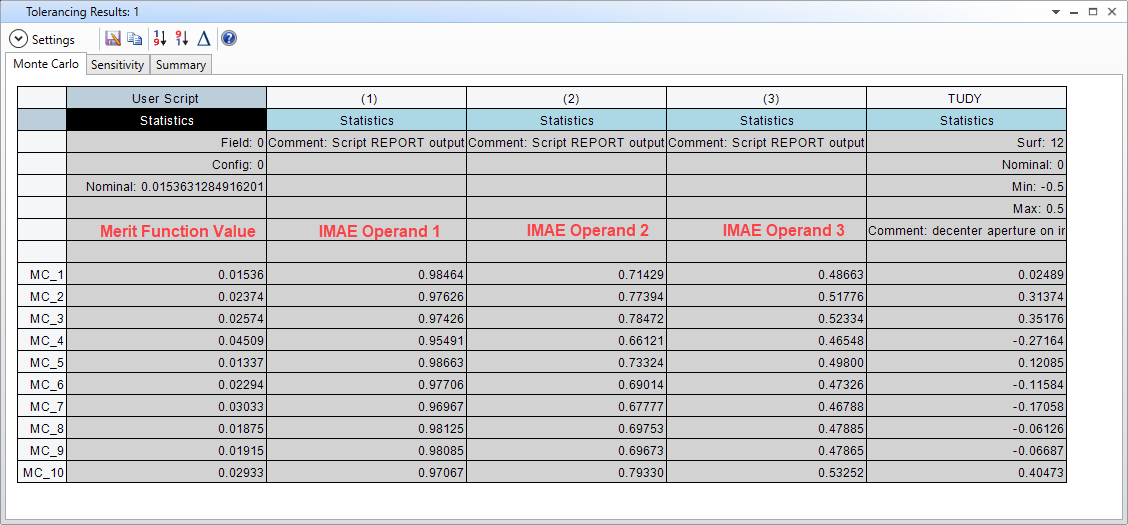Hello together,
I have a problem using the IMAE operand in a tolerance script. I would like to compute the IMAE for different object sizes in a MC simulation using a tolerance script. The essential part of the merit function is depicted in Pic2_Merit.png whereas the essential output is shown in Pic1_Result.png. The merit function is called for every MC-file.
Very often (but not always), the value of distinct IMAE operands is not adapted during the calculation and takes the value of the preceeding IMAE operand as depicted in yellow in Pic1_Result.png. Is this familiar to anyone? Is it avoidable by e.g. increasing somehow calculation time for the operand?
Thank you and best regards,
Gregor








